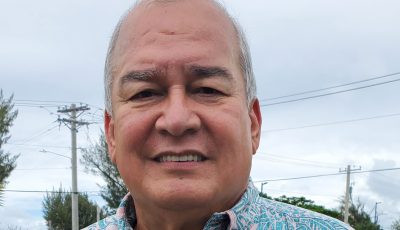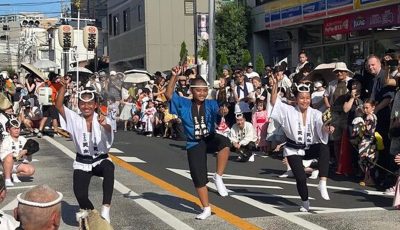Sugar King Park’s Katori Shrine celebrates its 100th anniversary
The Katori Shrine on Saipan marks its 100th anniversary this year, and the occasion was celebrated Saturday at the Sugar King Park on Middle Road.
The event was attended by representatives of numerous agencies, including the Marianas Visitors Authority, government officials, Saipan Mayor Marian DLG Tudela, Chief Priest Shoji Takahashi of the Katori Jingu Shrine in Chibu Prefrecture, and members of the Japanese Society of the NMI.
A program was later held at the Fiesta Resort and Spa’s World Café at 11:30am, during which plaques of appreciation were presented to representatives of the Katori Jingu Shrine.
Saturday’s celebration of the shrine’s 100th anniversary gave community members a chance to look back and think on the history of Saipan.
The Katori Shrine was originally built in 1914. It was moved from a small hill to its current location, the Sugar King Park in 1931 and was renamed the Saipan Shrine. It was burned to the ground during World War II.
Forty years after the end of the war, through the efforts of the Katori Shrine Association of Japan and the cooperation of the government of Saipan, the shrine was rebuilt. The reconstruction was completely accomplished in 1985 and the shrine was renamed the Saipan Katori-Jinja Shrine.
Since then, the celebration of the Saipan Katori Shrine and memorial service for those who died in the war have been held every year in October.
Katori-Jingu Shrine Chief Priest Takahashi said it was the first shrine built in the South Sea Islands.
In their message, Gov. Eloy S. Inos and Lt. Gov. Jude U. Hofschneider said the Katori Shrine on Saipan has given the island’s Shinto practitioners a place to pray and worship for the last 100 years.
“As the only Katori Shrine outside of Japan, we thank High Priest Takahashi for making the pilgrimage to visit it and our island,” Inos stated in his letter.
Tudela said she was very pleased to join the KJA and the Japanese Society of the NMI in marking the shrine’s 100th anniversary.
“It is truly a very special one, as it signifies that the very strong bond between Japan and the NMI is still intact, that their culture, belief, and relationship persevered for a century, despite the ups and downs of human progression,” Tudela said.



























